Events
On 21 January 1927 normal business came to a standstill for the festivities.
A message of congratulations arrived from King George V, who had twice unexpectedly visited the town...
(it was followed by) a week of sports, dinners, picnics and a regatta [6]
The main events to celebrate were conducted over the week of 21 to 28 January 1927, [7] with the local newspaper, the Albany Advertiser , providing substantial editorial promotion of the event. [8] [9]
The Governor of Western Australia started the week with an unveiling of a memorial stone at the Albany Town Hall. [10]
The celebrations included an "Exhibition of Secondary Industries". [11]

Albany is a port city in the Great Southern region in the Australian state of Western Australia, 418 kilometres (260 mi) southeast of Perth, the state capital. Albany is the oldest colonial settlement in Western Australia, predating Perth and Fremantle by over two years.

Albany Highway links Western Australia's capital city Perth with its oldest settlement, Albany, on the state's south coast. The 405-kilometre-long (252 mi) highway travels through the southern Wheatbelt and Great Southern regions, and is designated State Route 30 for most of its length. Outside of Perth the highway is predominately a sealed, single carriageway with regular overtaking lanes in some undulating areas. Albany Highway commences at The Causeway, a river crossing that connects to Perth's central business district. The highway heads south-east through Perth's metropolitan region, bypassed in part by Shepperton Road and Kenwick Link, and continues south-eastwards through to Albany. It intersects several major roads in Perth, including the Leach, Tonkin, Brookton, and South Western highways. The rural section of Albany Highway connects to important regional roads at the few towns and roadhouses along the route, including Coalfields Highway at Arthur River, Great Southern Highway at Cranbrook, and Muirs Highway at Mount Barker.

South Western Highway is a highway in the South West region of Western Australia connecting Perth's southeast with Walpole. It is a part of the Highway 1 network for most of its length. It is about 406 kilometres (252 mi) long.
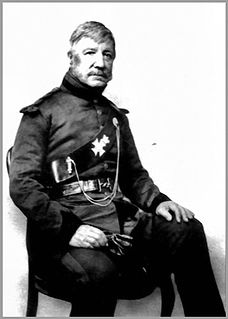
Edmund Lockyer, was a British soldier and explorer of Australia.
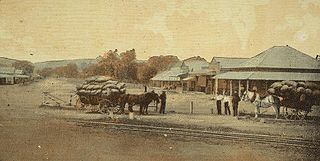
Helidon is a town and locality in the Lockyer Valley Region of southeast Queensland, Australia. Helidon is located on the Warrego Highway, 106 kilometres (66 mi) west of the state capital, Brisbane, and 21 kilometres (13 mi) east of Toowoomba. The town had a population of 1,059 at the 2016 census.

Forrest Highway is a 95-kilometre-long (59 mi) highway in Western Australia's Peel and South West regions, extending Perth's Kwinana Freeway from east of Mandurah down to Bunbury. Old Coast Road was the original Mandurah–Bunbury route, dating back to the 1840s. Part of that road, and the Australind Bypass around Australind and Eaton, were subsumed by Forrest Highway. The highway begins at Kwinana Freeway's southern terminus in Ravenswood, continues around the Peel Inlet to Lake Clifton, and heads south to finish at Bunbury's Eelup Roundabout. There are a number of at-grade intersections with minor roads in the shires of Murray, Waroona, and Harvey including Greenlands Road and Old Bunbury Road, both of which connect to South Western Highway near Pinjarra.

Murphys Creek is a rural town and locality in the Lockyer Valley Region, Queensland, Australia. In the 2016 census, Murphys Creek had a population of 629 people.

In 1929, Western Australia (WA) celebrated the centenary of the founding of Perth and the establishment of the Swan River Colony, the first permanent European settlement in WA. A variety of events were run in Perth, regional areas throughout the state, and even across Australia such as the Western Australian Centenary Air Race.

Albany Senior High School is a comprehensive public co-educational high day school, located in Albany, a regional centre in the Great Southern region, 420 kilometres (261 mi) south-southeast of Perth, Western Australia. The school was established in 1918. The school's catchment area covers most of the City of Albany and in 2015 the school had an enrolment of 1,113 students between Year 7 and Year 12; four percent of whom were Indigenous Australians.
White City, also known as Cooee City or Ugly Land, was an amusement park that existed on the Perth foreshore in Perth, Western Australia between World War I and 1929.
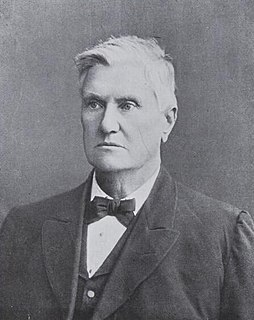
Sir Charles Henry Goode was a British Australian merchant, businessman, politician and philanthropist in the early days South Australia. He founded Goode, Durrant and Company in 1882.

Little Grove is a suburb of Albany, Western Australia.

The Albany Advertiser, also published as the Australian Advertiser and the Albany Advertiser and Plantagenet and Denmark Post, is a biweekly English language newspaper published for Albany and the Great Southern region in Western Australia.
Thomas Henry Jones Mus. Bac. was a South Australian organist and music teacher.
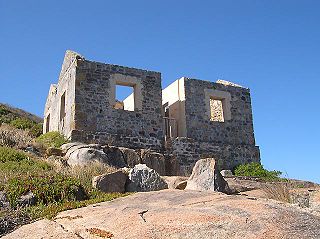
The coastline of the Albany area was observed by Europeans for the first time in 1627 by the Dutchman François Thijssen, captain of the ship 't Gulden Zeepaert, who sailed to the east as far as Ceduna in South Australia and back. Captain Thijssen had discovered the south coast of Australia and charted about 1,768 kilometres (1,099 mi) of it between Cape Leeuwin and the Nuyts Archipelago.
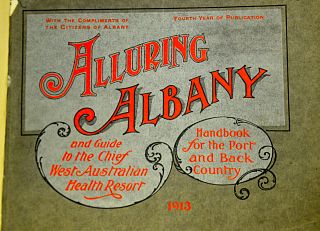
"Alluring Albany" was a book published between 1910 and 1913 by the Albany Advertiser about the town and port of Albany, Western Australia. The printing company, a part of the Advertiser operation, had been founded by William Frear Forster – the founding editor of the Advertiser, who however by the time of publication had moved to work on The Mercury in Hobart, Tasmania.

The Great White Fleet in Albany, Western Australia was the visit of the American naval fleet in late 1908 on its tour around the world.

Residency Point was a location on the northern shore of Princess Royal Harbour, in Albany, Western Australia where Edmund Lockyer raised the British flag in 1827.
"Sleepy Seas" was a hit song which was first published 1920 by Private Reginald Stoneham while he managed the Melola Salon music store. It was an instant popular success with dance halls. The following year sales expanded to other music publishers. This vocal waltz was used to accompany silent movies, in the era before talkies.
















